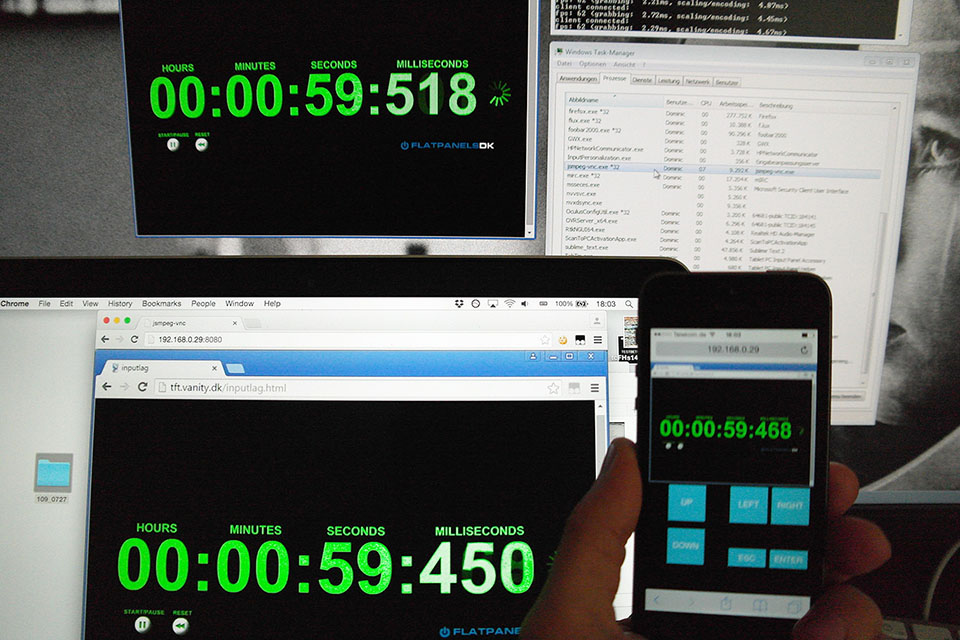A JavaScript MPEG1 Video & MP2 Audio Decoder
JSMpeg is a Video Player written in JavaScript. It consists of an MPEG-TS Demuxer, WebAssembly MPEG1 Video & MP2 Audio Decoders, WebGL & Canvas2D Renderers and WebAudio Sound Output. JSMpeg can load static files via Ajax and allows low latency streaming (~50ms) via WebSocktes.
JSMpeg can decode 720p Video at 30fps on an iPhone 5S, works in any modern browser (Chrome, Firefox, Safari & Edge) and comes in at 42kb gzipped.
See jsmpeg.com/perf.html for a performance comparison with different resolutions and features en-/disabled.
Using it can be as simple as this:
<script src="jsmpeg.min.js"></script> <div class="jsmpeg" data-url="video.ts"></div>
Download
-
jsmpeg.min.js
135kb minified, 42kb gzipped. -
github.com/phoboslab/jsmpeg
Source & documentation
Low Latency Video & Audio Streaming that works everywhere – yes, even on the iPhone
JSMpeg can connect to a WebSocket server that sends out binary MPEG-TS data. Where this data comes from, is up to you.

The latency is only dependend on your source, the network conditions and how fast your browser, GPU and monitor can spit out frames. For a screen capture on a local network, it can be as low as 50ms.
One of the easiest ways to set this up is to use
ffmpeg and a tiny nodejs WebSocket server. See the
documentation on github
for the details.
Projects using JSMpeg & further reading
-
Decode It Like It's 1999
Various interesting bits about JSMpeg's development -
JSMpeg – Fronteers 2015, Dominic Szablewski
A talk about the inner workings of the MPEG1 codec -
Instant Webcam
Stream video from iPhone/iPad to any Browser in your Wi-Fi -
jsmpeg-vnc
Control your Windows PC through your Browser
Why use JSMpeg?
What's the alternative?
- HTTP Live Streaming (HLS) or MPEG-DASH add at least 5 seconds of latency.
- WebRTC is not supported on iOS.
- Not all browsers can decode H264; not all browsers can decode VP8.
- WebRTC is tremendously complex. Try setting up a WebRTC broadcast server and you'll find yourself in a mess of STUN, TURN, signaling and media servers while trying to setup and compile a whooping 4GB git repository with custom tooling just to end up with what is essentially a black box that you can't possibly understand within your lifetime (well, I can't).
With JSMpeg you get:
- A video and audio format that works in all modern browsers.
- No licensing fees. All MPEG1 and MP2 patents have expired.
- Very tight control over the Audio and Video decoders to implement your ideas.
- Very low latency realtime streaming with high framerates and acceptable quality and bitrates.
- A stack that you can understand from top to bottom.
Should you use JSMpeg for everything? Certainly not. If you just want to have a static video on your page, go with Youtube or encode it as WebM & MP4 and host it yourself.
If you need tight control over playback, realtime streaming or if you're just curious about Video & Audio codecs, JavaScript or WebGL, consider JSMpeg.